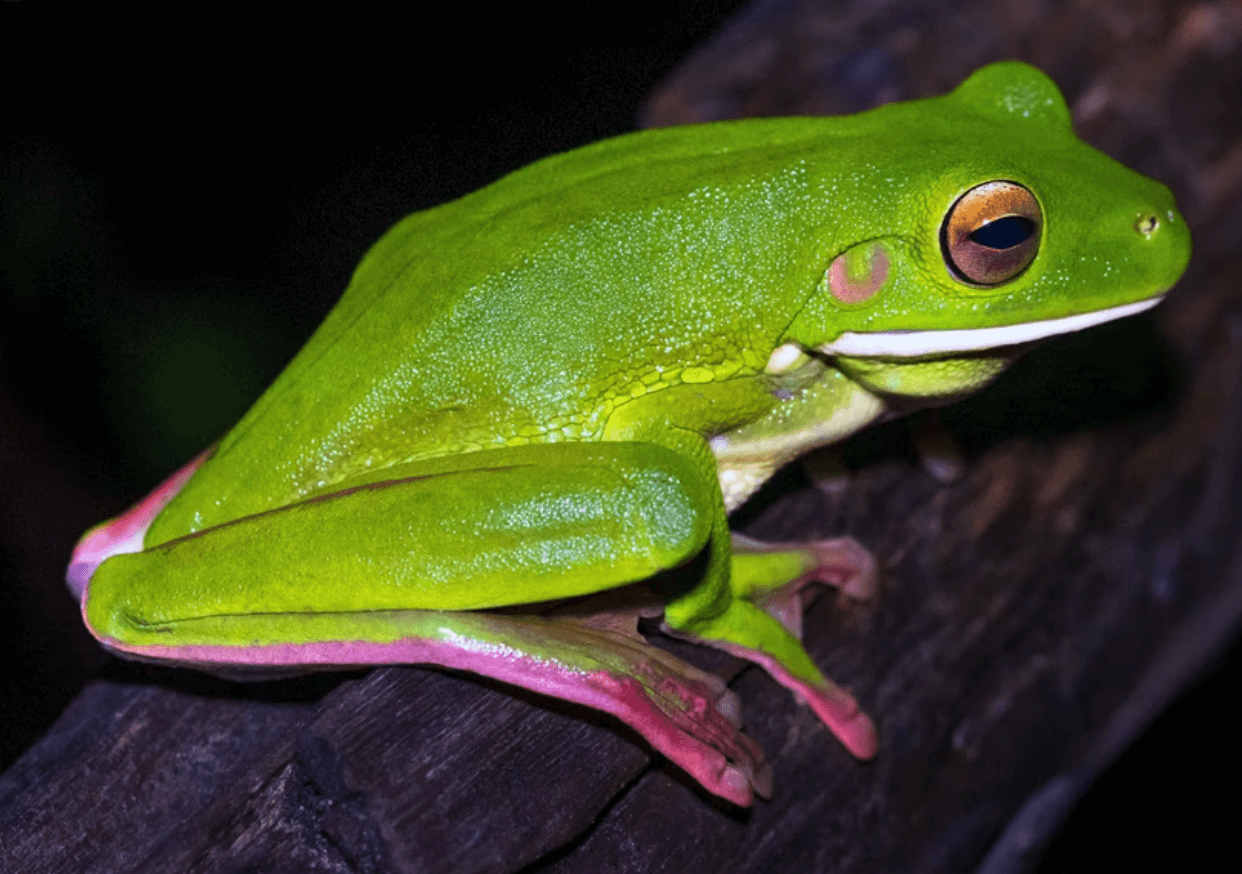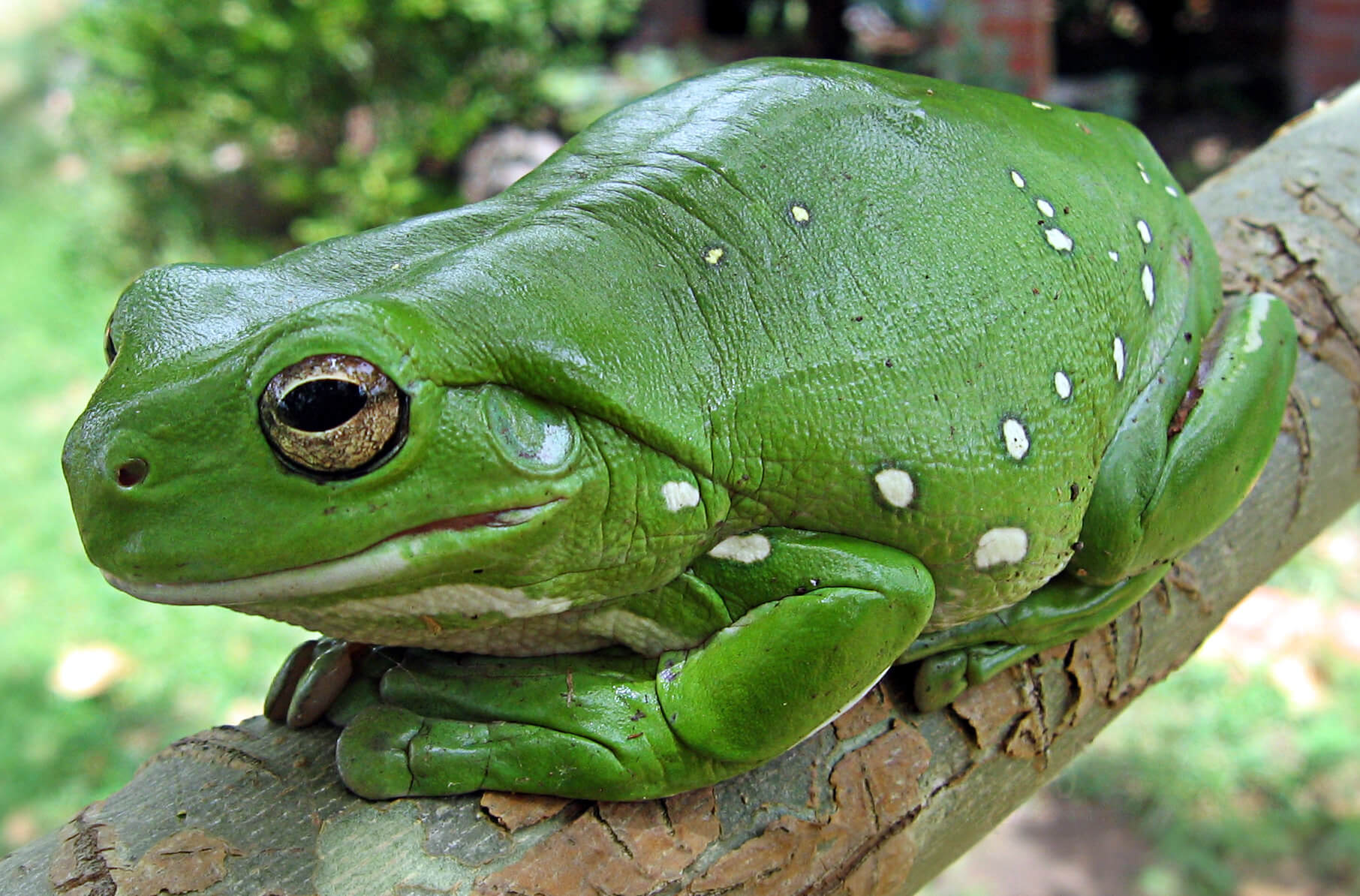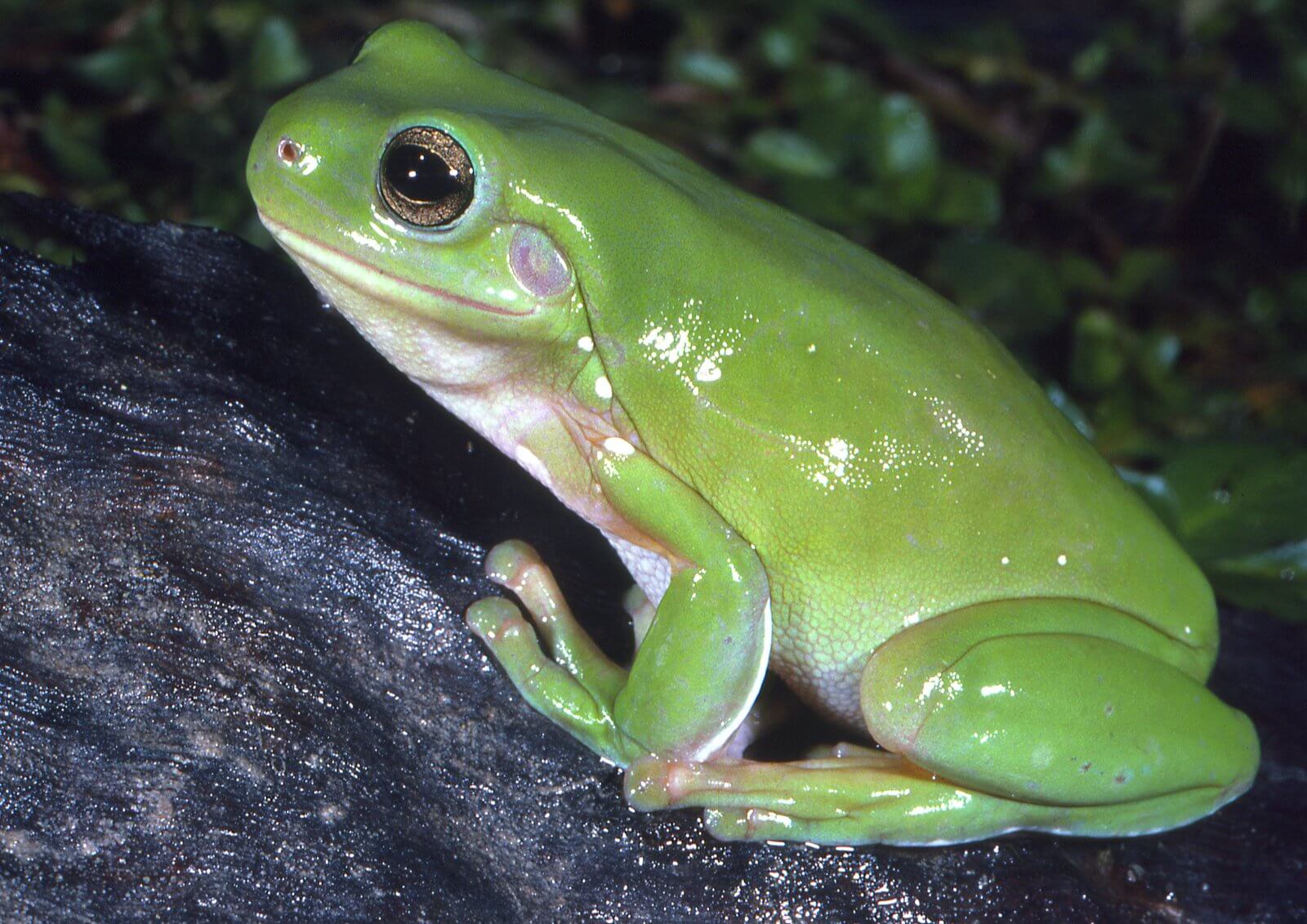The Green Tree Frog (Litoria caerulea), also known as simply green tree frog in Australia, White’s tree frog, or dumpy tree frog, is a species of tree frog native to Australia and New Guinea.
It is one of the largest frogs found in Australia, growing up to 10cm long. They can come in a variety of green shades, from olive yellow to lime green. A white or pale-yellow line also runs from the jaw to groin and the abdominal is white or yellow. These frogs are nocturnal and have very good eyesight and hearing, enabling them to hunt at night and hear their prey before they are caught.
After rain on a hot day, the Green Tree Frog will emerge. You may find them in your house, your water tank, your drainpipe, toilet, pool, or even mail box, in search of a cool moist spot.
The rain brings Australian native frog species out in droves – and if you don’t see a Green Tree Frog, you may hear them. Green Tree Frogs love to get into downpipes and tanks during the mating season in spring and summer. These locations act like a microphone to increase the volume of their low, slow ‘brawk, brawk, brawk‘ call.
What are tree frogs?
These frogs belong to a group of amphibians known as tree frogs. There are over 650 different species found around Australia, Africa and South America. Most are small and vary in size from 2-15cm long. The green tree frog is one of these little guys!
They’re usually olive yellow or lime green with a white or pale yellow line running from their jaw to groin and an abdominal area that’s white or yellow.
They hunt for food at night using their excellent eyesight – which is even better than humans in low light conditions – to find prey items like spiders, flies and crickets.
Their habitat
They are commonly found in and around wet areas, such as ponds, streams, swamps and lakes. They are mostly nocturnal so spend most of their time on low-lying branches and vegetation surrounding their aquatic home. They prefer to live in moist woodlands but can also be found in suburban gardens, where they shelter under garden sheds or piles of rocks around swimming pools.
The green tree frog is active all year round, with mating occurring from late autumn through until spring. During summer months, females lay eggs in clumps of 50-100 which hatch after about 3 weeks. Tadpoles will then undergo metamorphosis over a period of 40 days before emerging as fully grown frogs ready to start life anew!
Breeding habits
The Green Tree Frog is a terrestrial egg-laying frog which means that it lays its eggs in damp, terrestrial environments. Females lay their eggs in small clutches of two to six on land under logs, rocks or leaves. When breeding season is over, females fill their vocal sacs with water and guard their eggs until they hatch.
Female frogs have been observed tending to hatchlings by fanning them with their limbs. It is also believed that tadpoles can stay within their eggs for up to three months after hatching if conditions are not favourable. In fact, during winter months some species can enter into diapause where they remain dormant until conditions improve.
A few weeks before hatching occurs, larvae undergo a transformation where internal organs rearrange themselves and limb buds appear. A tadpole’s tail begins to shrink as legs grow longer.
What do they eat?
The Green Tree Frog is an opportunistic feeder, which means it eats anything that will fit in its mouth. It can eat both live prey and dead prey. Their diet mostly consists of insects, crickets, locusts, moths and flies but they also enjoy eating snails, reptiles like geckos and skinks, spiders and sometimes small mammals like mice or bats. They will catch their food by leaping at it with a gaping mouth and quickly swallowing it whole.
The adults can eat larger prey than tadpoles but only one of their four powerful limbs are used for catching prey. They have no teeth, but strong jaws and throat muscles which means they can swallow any food whole, usually fitting it in their mouth at once. Their toothless mouths prevent them from getting injured while they eat. The tadpoles do not feed on plants or animals – instead they filter small algae out of water using its mouth which is covered in soft tentacle-like gills called papillae.
![]()




